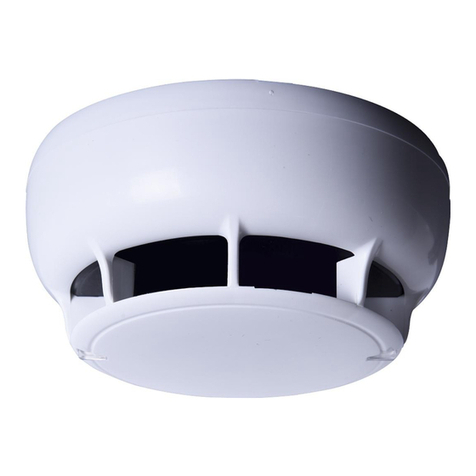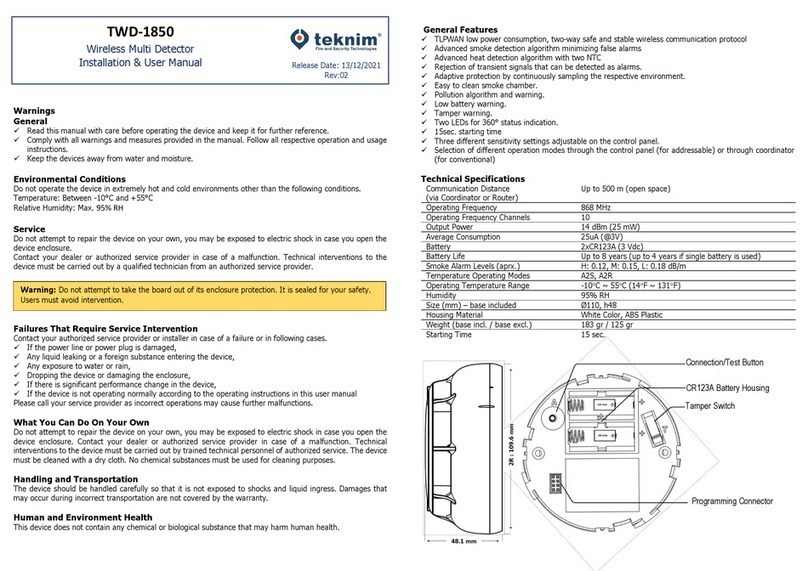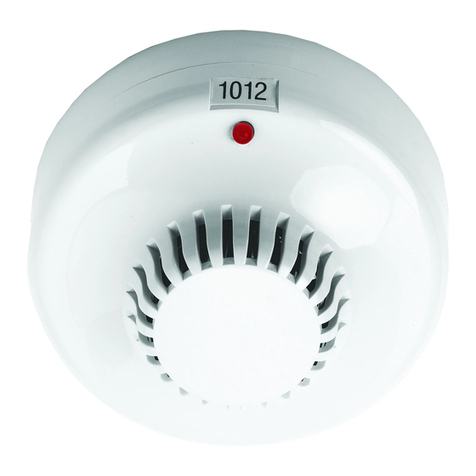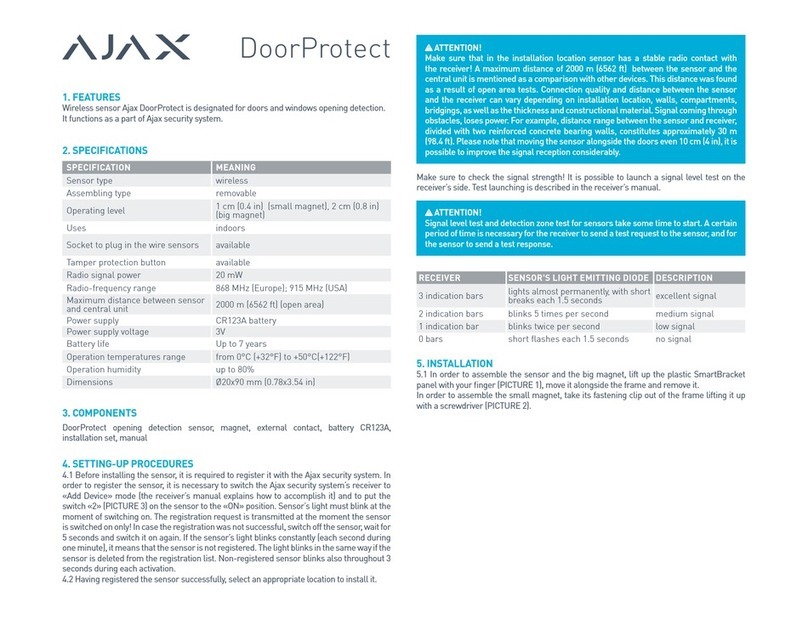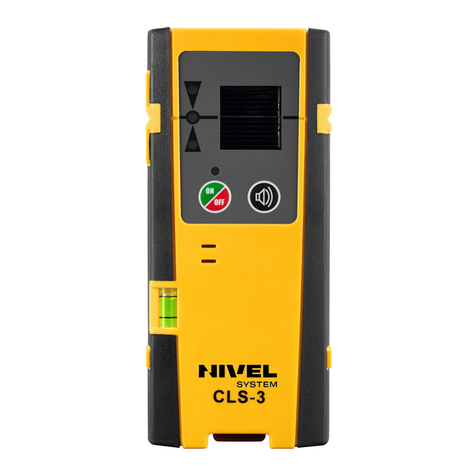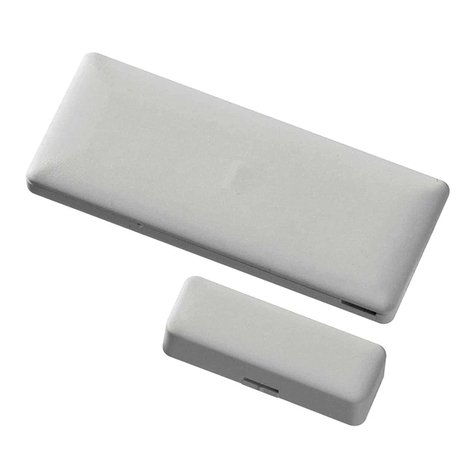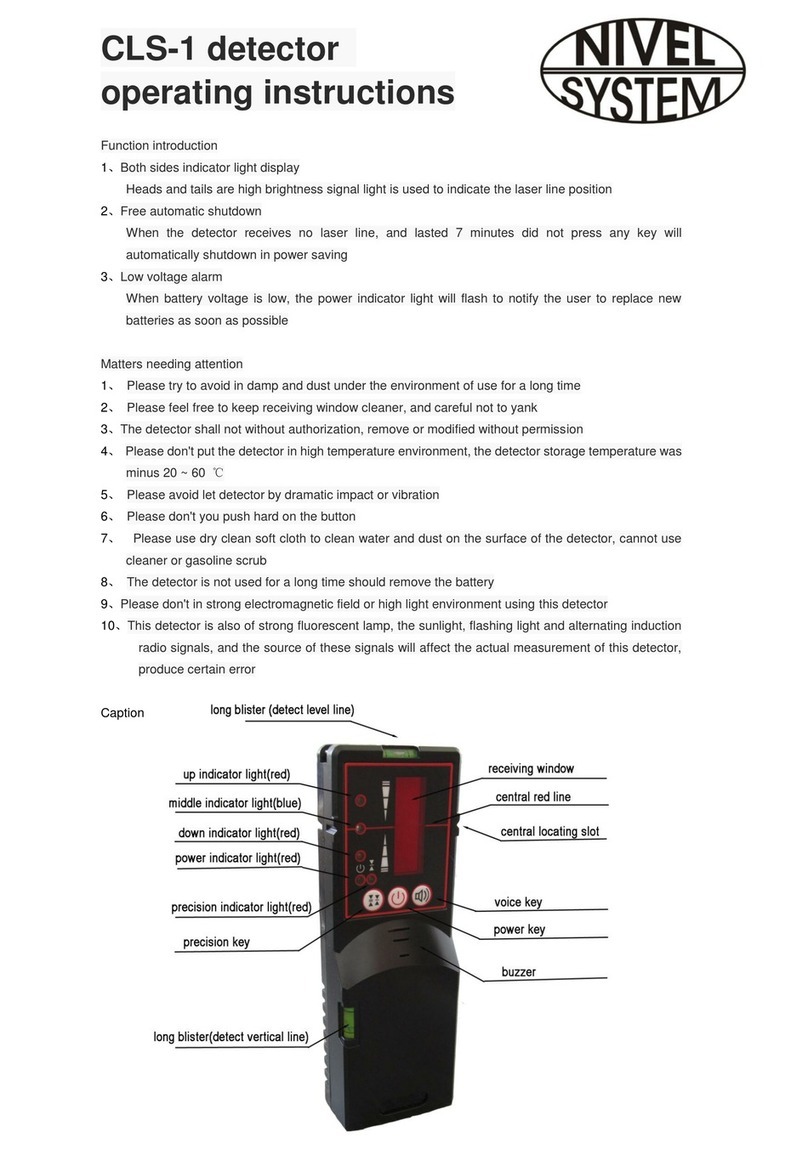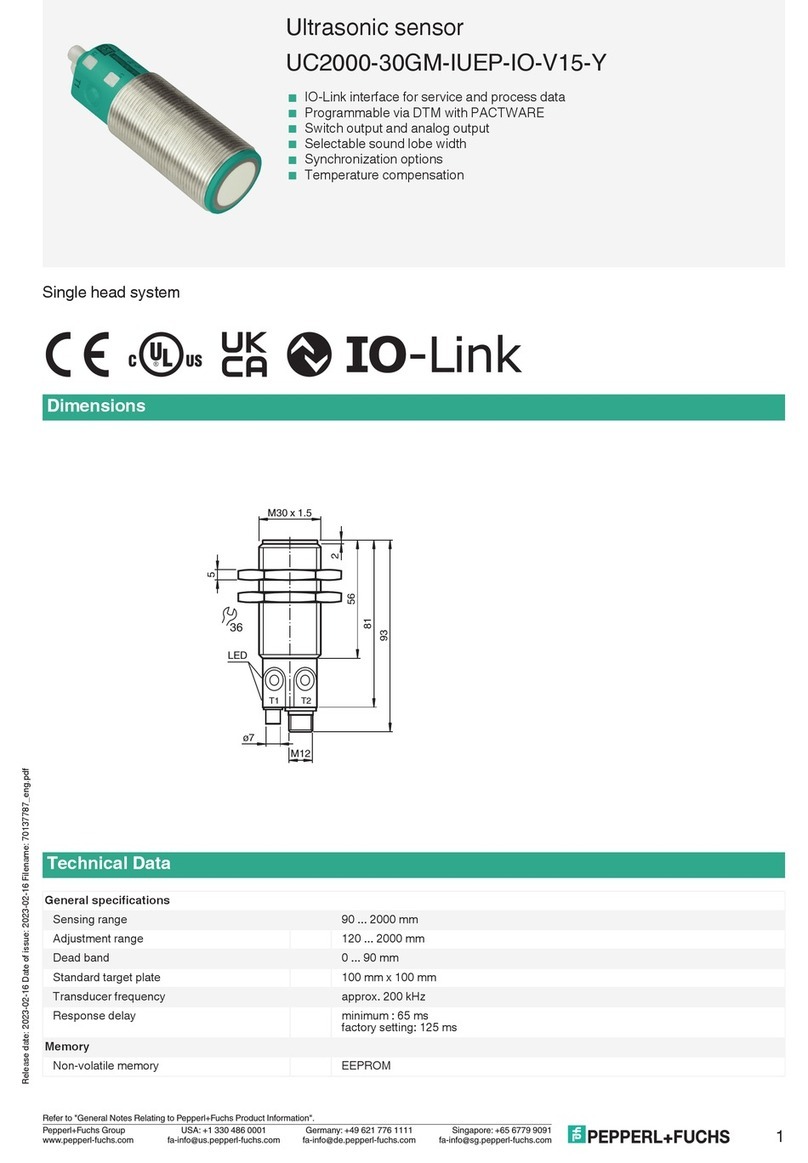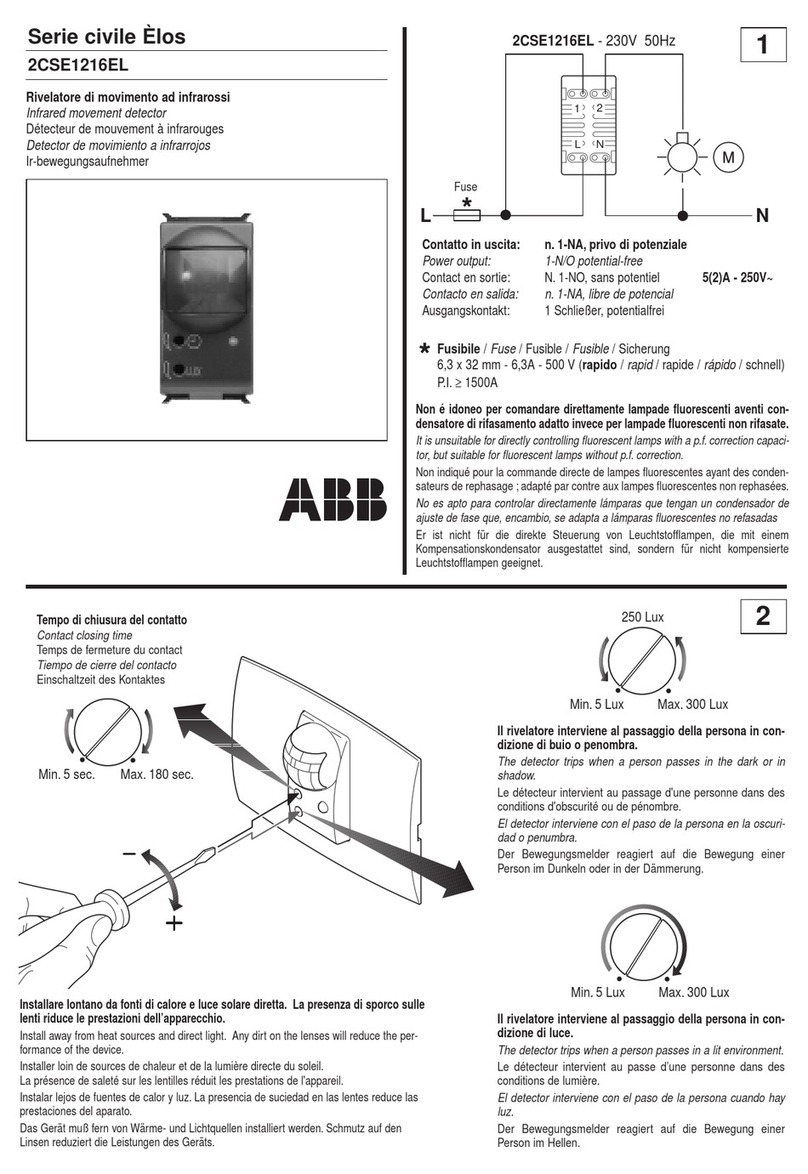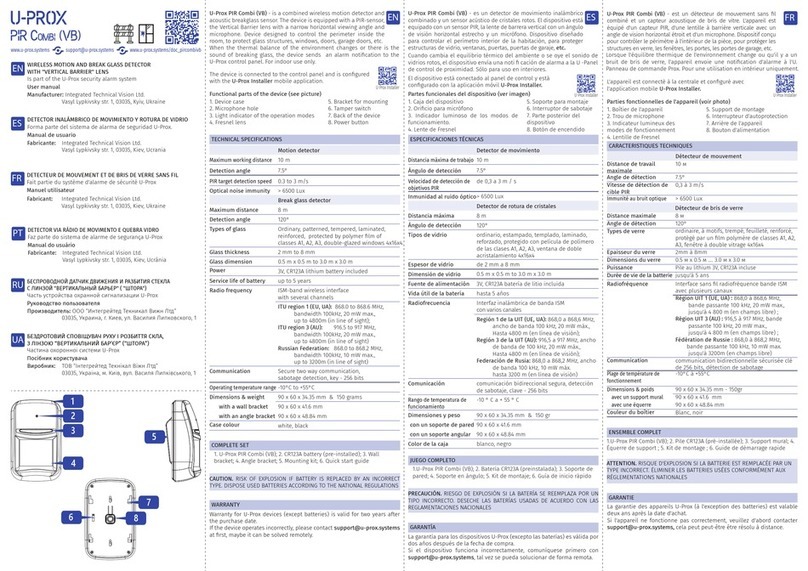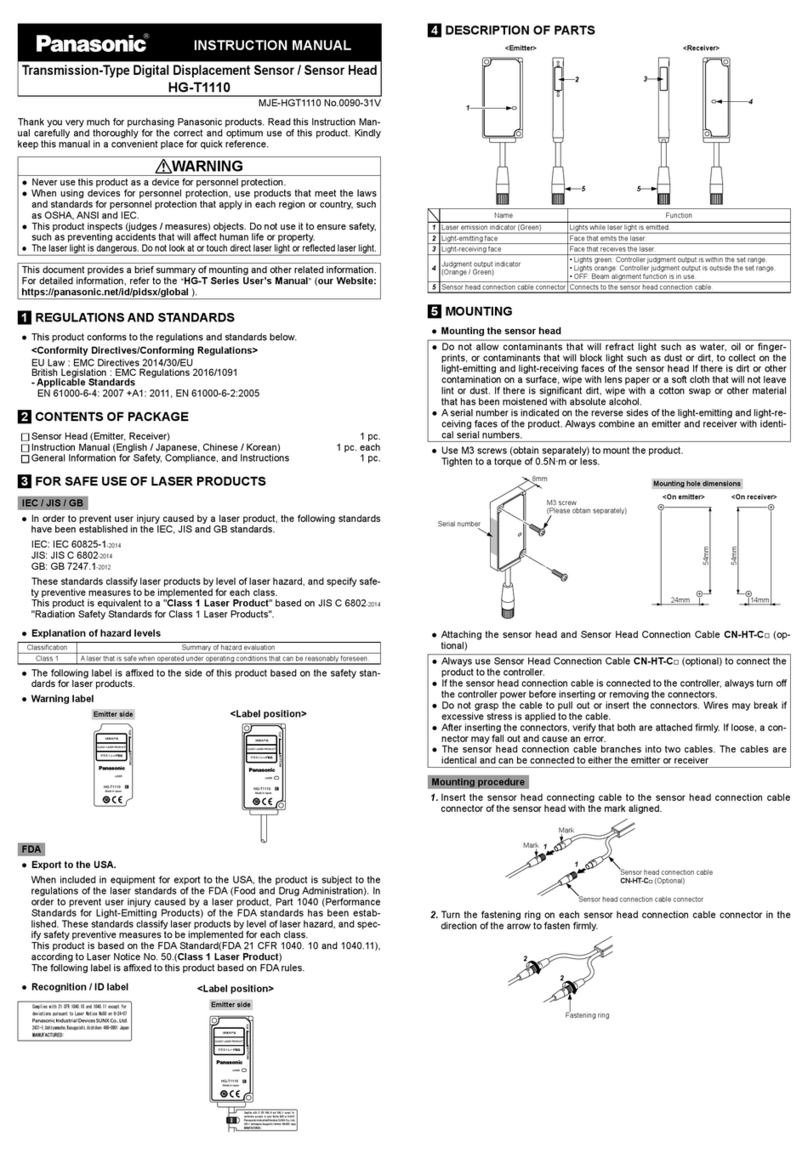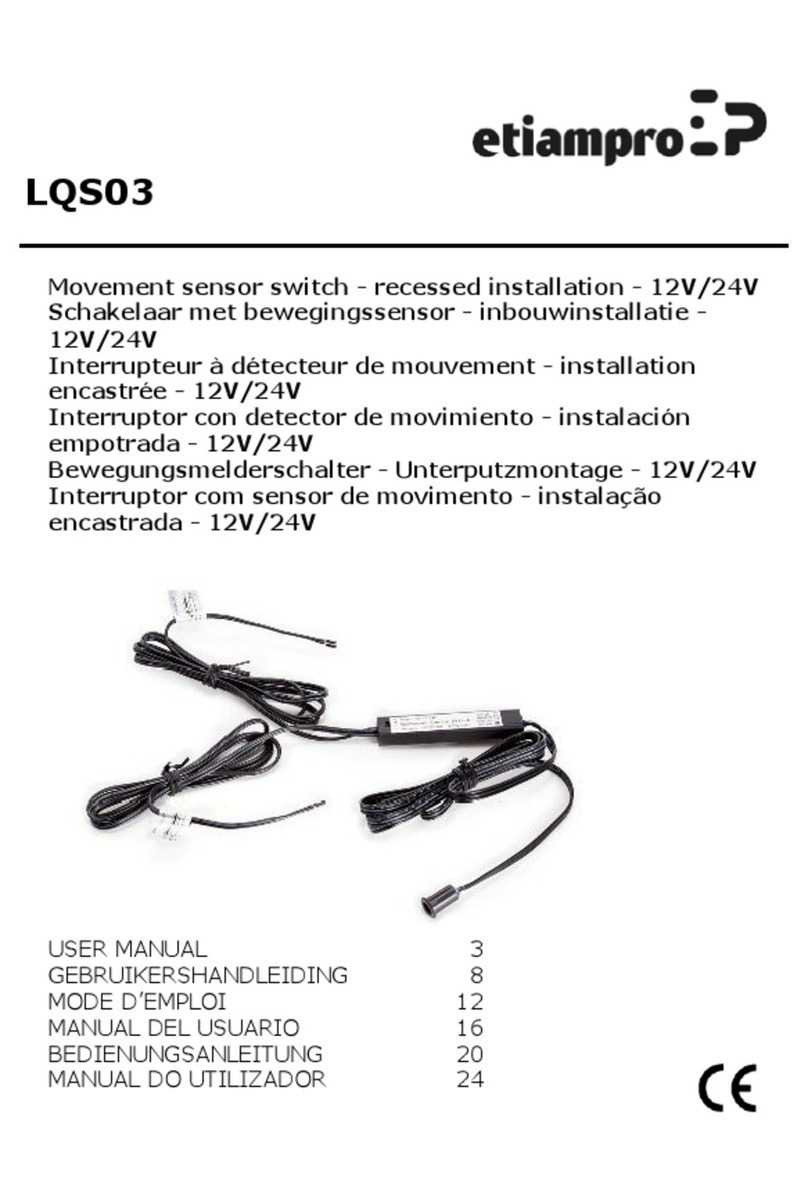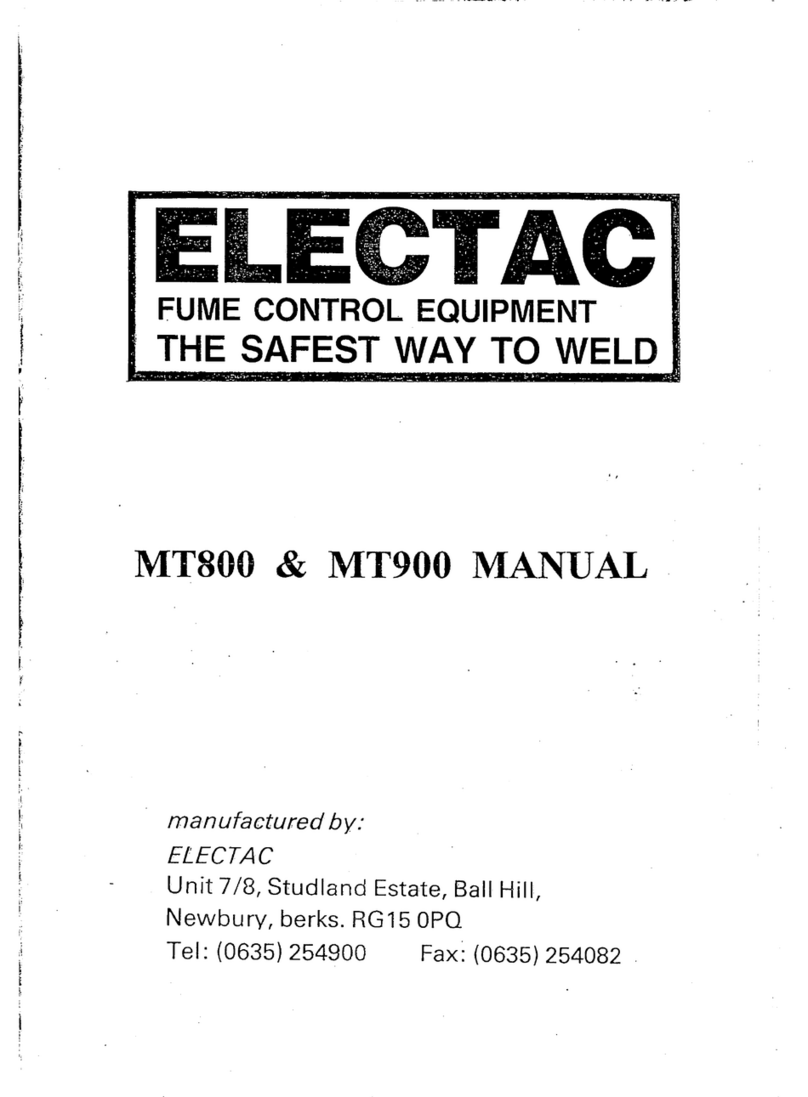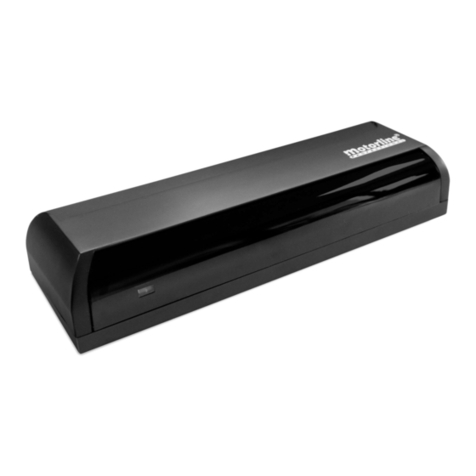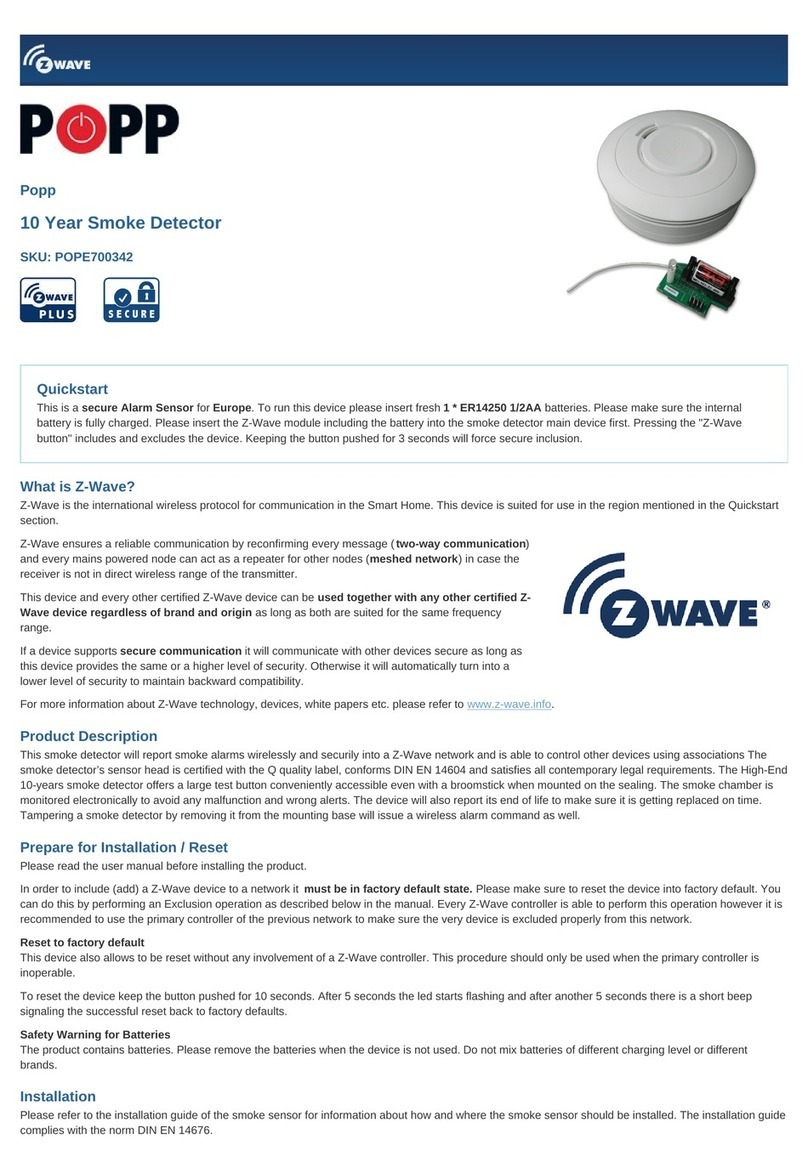Teknim TWM-3885 Instruction Manual

TWM-3885
Conventional Wireless Coordinator
Installation & User Manual
Release Date: 15/09/2021 Rev:01

TWM-3885 CONVENTIONAL WIRELESS COORDINATOR –R01
TWM-3885 CONVENTIONAL WIRELESS COORDINATOR –R01
1
Contents
1 General Definitions.......................................................................................................................... 2
2 Technical Specifications................................................................................................................... 2
3 Installation....................................................................................................................................... 3
3.1 Mounting................................................................................................................................. 3
3.1.1 Cable Holes...................................................................................................................... 4
3.1.2 Wall Mounting................................................................................................................. 4
3.2 Antenna Installation ................................................................................................................ 4
3.3 Supply Connection................................................................................................................... 6
3.4 Zone Alarm Resistor Connection............................................................................................. 6
3.5 Zone Line Connection.............................................................................................................. 7
3.6 Siren Line Connection.............................................................................................................. 8
3.7 Module Interface................................................................................................................... 10
3.8 Programming Menu .............................................................................................................. 11
3.8.1 Events ............................................................................................................................ 11
3.8.2 Settings.......................................................................................................................... 12
3.8.3 Functions ....................................................................................................................... 14
3.8.4 Device List...................................................................................................................... 17
3.8.5 Information.................................................................................................................... 18
4 Ping Time....................................................................................................................................... 19
5 Quick Menu Access........................................................................................................................ 20
6 Events and Indicators .................................................................................................................... 21
7 Signal Strength Table (RSSI Table)................................................................................................. 22
8 Quick Installation........................................................................................................................... 22
9 Software Update ........................................................................................................................... 23
10 Manufacturer Company and Service......................................................................................... 23

TWM-3885 CONVENTIONAL WIRELESS COORDINATOR –R01
TWM-3885 CONVENTIONAL WIRELESS COORDINATOR –R01
2
1General Definitions
TWM-3885 Conventional Wireless Coordinator module is a cabled-wireless access control unit that
allows any conventional fire alarm panel of TLPWAN(1) wireless system to be integrated into the zone
line.
Basically, it allows the TLPWAN based wireless fire detection devices to be connected to the
conventional fire alarm system just like the conventional fire detection devices, and also to be
monitored and controlled against fault and fire situations.
TWM-3885 Conventional Wireless Coordinator module is fed through an external power source and
allows all fire and fault situations on the wireless system to be monitored through it. At the same time,
it performs the sounding and muting functions of the wireless sirens by monitoring the siren outlet of
the conventional fire alarm panel.
(1) TLPWAN (Teknim Low Power Wide Area Network) is a wireless communication protocol
developed by Teknim which allows low power consumption devices on a wider area in a stable
and safe manner by using two-way communication.
2Technical Specifications
Supply Voltage
18Vdc –35Vdc
Average Current Consumption
15mA (@24Vdc)
Operating Frequency
868 MHz
Output Power
14 dBm (25 mW)
Communication Distance
500 m (open area)
Number of Channels
10
Total Number of Connectible Devices
31 (Routers and other devices)
Number of Routers That Can be Connected Consecutively
5
Number of Routers That Can be Connected to a
Coordinator Side-by-Side
5
Humidity
95% RH
Operating Temperature
-10 –+55 degrees
Size (mm)
150 mm x 110 mm x 42 mm + 70 mm Antenna
Housing Material
White Color, ABS Plastic
Cross-section of the Cable Used
0.4mm ² ~ 1.5mm ²
Weight
185 gr

TWM-3885 CONVENTIONAL WIRELESS COORDINATOR –R01
TWM-3885 CONVENTIONAL WIRELESS COORDINATOR –R01
3
3Installation
Under this topic, the installation of TWM-3885 Conventional Wireless Coordinator module will be
explained step by step in details. Please read all steps carefully.
3.1 Mounting
The following articles must be followed carefully in order to provide a good communication with the
devices connected to the coordinator:
•Choosing a proper communication channel will make the communication between the devices
more stable. Channel selection can be made automatically or manually. If manual selection is
to be made, initially all transmissions in the environment must be detected with the RF-
analyzer and according to this, relatively the most available channel must be preferred. See
programming section for manual channel selection.
•The environmental factors such as high current lines, big metal objects, computers, network
lines, other cable lines, etc. that may interrupt the connection with the devices on the wireless
network must be avoided.

TWM-3885 CONVENTIONAL WIRELESS COORDINATOR –R01
TWM-3885 CONVENTIONAL WIRELESS COORDINATOR –R01
4
•There must be at least 2 meters of distance from other wireless devices.
•If possible, it must be mounted at least 2 meters high from and parallelly to the ground. The
antenna must remain at an angle of 90 degrees to the ground.
•It must be operated under the proper ambient conditions indicated in technical specifications.
Otherwise, the operating performance will be affected.
•A suitable location must be preferred by considering the communication distance when all
devices to be communicated are taken into consideration. Communication distance can be
seen in technical specifications.
The mounting holes of the module are located under the module cover. In order to access those, the
cover must be opened by gently pushing through the holes on the right side of the module by using a
flathead screwdriver.
3.1.1 Cable Holes
The holes through which the cables necessary for module connection will pass must be prepared
before wall mounting. For this purpose, holes must be broken open on the round points marked on
the product housing. Before breaking open the holes, the cards inside of the module must be removed.
The tabs holding the cards must be pulled gently in order to remove the cards.
Once the cards are removed, a gentle pressure must be applied behind the point to be broken open in
a manner to leave a space underneath by using a thick screwdriver in order to break open the holes.
The cards can be reinstalled and fixed after this procedure.
3.1.2 Wall Mounting
Mark the wall according to the 4 screw holes seen below and bore 4 holes on the wall by using a drill
according to the diameters of the wall plugs included in the pack. Insert the wall plugs into the bored
holes and fix the module on the wall by screwing it onto the wall.
Figure 1 –Mounting Hole Sizes
3.2 Antenna Installation
TWM-3885 Conventional Wireless Coordinator module is placed in the box with the antenna wire and
antenna housing disassembled. Ensure a good installation of the antenna in order to provide a good

TWM-3885 CONVENTIONAL WIRELESS COORDINATOR –R01
TWM-3885 CONVENTIONAL WIRELESS COORDINATOR –R01
5
communication between devices. Otherwise, there may be distance problems and communication
performance losses.
There are two superposed cards connected to each other in the module: The upper one of those is
TLPWAN-RF card, while the other serves as the Flashlink interface and control card. The antenna
terminal is located on the TLPWAN-RF positioned as the lower card. Pass the wire antenna through the
antenna input of the box and fix it on the terminal to the right as shown in the figure. Make sure that
the terminal screw is firmly tightened. An antenna that is not fixed properly may cause performance
loss.
Figure 2 - Antenna Wire Installation
Once the wire antenna is fixed into its place, push the antenna housing into the antenna input tightly
to fix it into its place.

TWM-3885 CONVENTIONAL WIRELESS COORDINATOR –R01
TWM-3885 CONVENTIONAL WIRELESS COORDINATOR –R01
6
Şekil 3 - Anten Muhafazası Montajı
3.3 Supply Connection
Pass the cables from cable holes and strip their ends at a proper length, then make the supply
connections as shown in the following connection diagram. Make sure that the terminal screws are
tightened firmly.
Figure 4 –Supply Connection Diagram
3.4 Zone Alarm Resistor Connection
Zone alarm resistor must always be kept connected to the “Alarm Resistor” terminal. In case of any
alarm situation in the wireless system, the zone alarm resistor gets connected parallelly to the zone
EARTH
EN54-4
Power
Supply
+24VDC
GND

TWM-3885 CONVENTIONAL WIRELESS COORDINATOR –R01
TWM-3885 CONVENTIONAL WIRELESS COORDINATOR –R01
7
line, and thus the alarm is created on the fire alarm panel. The value of alarm resistor must have been
indicated in the user manual of your fire alarm panel. Teknim conventional fire alarm panels use
“470R” resistors as alarm resistors.
Figure 5 - Regional Alarm Resistor Connection
3.5 Zone Line Connection
Conventional wireless coordinator connects to the zone line and thus provides the fire alarm panel to
go into fault and alarm situation. Besides, it checks whether the reset button on the fire alarm panel is
pushed or not by monitoring the voltage on the zone line. There are two types of connection methods
for connecting the conventional wireless coordinator to the conventional zone line.
In case where the coordinator is connected to the middle of the zone line, the line end resistance
connects to another device at the end of the line. The coordinator provides the zone line to be
completed by connecting “Z-IN” and “Z-OUT” ends to each other and also provides the line end
resistance to be connected parallelly to the line. The coordinator, in case of a fault occurrence on the
wireless system, separates the “Z-IN” and “Z-OUT” ends and provides the zone line to become an open
circuit and thus provides the fire alarm panel to go into zone open circuit fault. In such case, since all
conventional devices that remain on the rest of the line will become de-energized, they will become
inoperable.
Zone Alarm Resistor
(Teknim: 470R)

TWM-3885 CONVENTIONAL WIRELESS COORDINATOR –R01
TWM-3885 CONVENTIONAL WIRELESS COORDINATOR –R01
8
Figure 6 - Coordinator Zone Connection Diagram 1
In cases where the coordinator is connected to the end of the zone line, the line end resistance gets
directly connected to the necessary terminals as shown in the following connection diagram. The
coordinator, in case of a fault occurrence in the wireless system, separates the “Z-IN” and “Z-OUT”
ends and makes the line end resistance become an open circuit and thus provides the fire alarm panel
to cause an open circuit fault. In such case, since no other devices will remain on the rest of the line,
all devices on the other side of the line will keep on operating.
Figure 7 –Coordinator Zone Connection Diagram 2
3.6 Siren Line Connection
Conventional sirens operate according to the voltage applied by the fire alarm panel to the siren line.
Conventional wireless coordinator, follows the siren line and decides whether the wireless siren will
set off or not. At the same time, just like in the zone line, it can check the siren line end resistance and
inform the fire alarm panel about any fault situation regarding the wireless sirens. There are two
Line end resistance
(Teknim: 4K7)
Conventional
Fire Panel
Z+
Z-
Z+IN
Z-IN
Z-OUT
Line end resistance
(Teknim: 4K7)
Conventional
Fire Panel
Z+
Z-
Z+IN
Z-IN
Z-OUT

TWM-3885 CONVENTIONAL WIRELESS COORDINATOR –R01
TWM-3885 CONVENTIONAL WIRELESS COORDINATOR –R01
9
connection methods for connecting the conventional wireless coordinator to the conventional siren
line.
In case where the coordinator is connected to the middle of the siren line, the line end resistance
connects to another siren at the end of the line. The coordinator provides the siren line to be
completed by connecting “SIREN-IN” and “SIREN-OUT” ends to each other and also provides the line
end resistance to be connected parallelly to the siren line. The coordinator, in case of a fault occurrence
on the wireless sirens, separates the “SIREN-IN” and “SIREN-OUT” ends and provides the siren line to
become an open circuit and thus provides the fire alarm panel to go into siren open circuit fault. In
such case, since all sirens that remain on the rest of the line will become de-energized, they will
become inoperable.
Figure 8 –Coordinator Siren Connection Diagram 1
In cases where the coordinator is connected to the end of the siren line, the line end resistance gets
directly connected to the necessary terminals as shown in the following connection diagram. The
coordinator, in case of a fault occurrence in the wireless sirens, separates the “SIREN-IN” and “SIREN-
OUT” ends and makes the line end resistance become an open circuit and thus provides the fire alarm
panel to cause a siren open circuit fault. In such case, since no other sirens will remain on the rest of
the line, all sirens on the other side of the line will keep on operating.
Line end resistance
(Teknim: 4K7)
Conventional
Fire Panel
SIREN+
SIREN+IN
SIREN-IN
SIREN-OUT
SIREN-

TWM-3885 CONVENTIONAL WIRELESS COORDINATOR –R01
TWM-3885 CONVENTIONAL WIRELESS COORDINATOR –R01
10
Figure 9 - Coordinator Siren Connection Diagram 2
3.7 Module Interface
Figure 10 –Module Card Detailed Interface
•Supply Connection: Conventional wireless coordinator needs an external supply. +24VDC
supply voltage is provided through these terminals.
•Alarm Resistor: Any alarm on the wireless system is informed to the fire alarm panel by means
of connecting the alarm resistor of the coordinator to the zone line.
•Zone Connection: Coordinator makes the fire alarm panel give an open circuit fault by
connecting or disconnecting the line end resistance to the line through the zone connection.
SIREN-OUT
BACK Button
DOWN Button
FORWARD Button
UP Button
OLED Screen
L5 –Fault Led
L6 –Low Batt Led
L1 Led
L2 Led
L4 –Heart Led
L3 - Alarm Led
Tamper Button
USB
Serial Port
Line end resistance
(Teknim: 4K7)
Conventional
Fire Panel
SIREN+
SIREN+IN
SIREN-IN
SIREN-
Supply
Alarm Resistor
Zone Connection
Siren Connection

TWM-3885 CONVENTIONAL WIRELESS COORDINATOR –R01
TWM-3885 CONVENTIONAL WIRELESS COORDINATOR –R01
11
Besides, it checks whether the reset button on the panel is pushed or not by monitoring the
voltage on the zone line.
•Siren Connection: The coordinator makes the fire alarm panel give a siren open circuit fault by
connecting or disconnecting the line end resistance to the line through the siren connection.
Besides, it checks whether the conventional sirens on the panel work or not by monitoring the
voltage on the siren line.
•Serial Port: It is used for software update.
•USB: It is used for monitoring and analysis programs.
•Tamper Button: It is used for detecting that the cover is opened. When the cover is opened,
this will be shown as a fault on the analogue addressed fire alarm panel.
•OLED Screen: The screen does not work in any quiescent situation. Any alarm activates in case
of a fault or when the cover is opened. Programming menu can be accessed through this
screen.
•Alarm Led: It shows any alarm state on the wireless system.
•Heart Led: It shows that the module is operating and the wireless network is set.
•Fault Led: It shows any fault state on the wireless system.
•Low Battery Led: It lights when the battery of any wireless devices is low.
•L1 Led: It lights when connection to wireless network is activated.
•L2 Led: It lights when there is an ongoing process.
•BACK Button: It is used for going back on the menu or for cancelling.
•DOWN Button: It is used for proceeding on the menu or for decreasing a value on the menu.
•UP Button: It is used for going back on the menu or for increasing a value on the menu.
•FORWARD Button: It is used for going to a menu that is selected on the menu or for approval
purposes.
3.8 Programming Menu
Addressed Wireless Coordinator module menu will be explained under this topic.
If there are no events on the system when the menu is opened or the upmost menu is selected by
using the BACK button, the following main screen will be displayed initially:
FORWARD for the Menu
3.8.1 Events
This is the section under which the instant events that occur within the wireless system are listed. The
events are listed under three categories being “Alarm”, “Fault” and “Warning”.

TWM-3885 CONVENTIONAL WIRELESS COORDINATOR –R01
TWM-3885 CONVENTIONAL WIRELESS COORDINATOR –R01
12
Events
To enter the menu: “Main Screen” > FORWARD > “Events” > FORWARD
Events
>1.Alarm
2.Fault
3.Warning
Any category can be selected from the “Events” screen shown above, and the devices under the
selected category are listed. Example: “Fault” category is selected in the following figure and the
devices in fault state are listed.
Fault (2)
>1.Coordinator
ID:18850601200001
2.Detector
ID:18502001200015
To navigate through the device list, use the DOWN and UP buttons on the menu. Go to sub-menu by
pressing the FORWARD button in order to read the details of faults. Example: Coordinator is selected
and its fault detail is displayed. On the address line, the number in brackets is the address in the
addressed system and then the address in the wireless system. On the following lines, the fault states
of the respectively selected devices are listed. If there are more than one fault states, they will be listed
one under the other.
18850601200001
>1.Address: (1)0
2.Tamper Active
3.8.2 Settings
This is the menu which device address, number of devices, channel, language and screen contrast
settings can be adjusted.

TWM-3885 CONVENTIONAL WIRELESS COORDINATOR –R01
TWM-3885 CONVENTIONAL WIRELESS COORDINATOR –R01
13
Settings
To enter the menu: “Main screen” > FORWARD > DOWN > “Settings” > FORWARD
Settings
>1.Channel
2.Language
3.Contrast
3.8.2.1 Channel
Each small frequency range obtained by dividing the frequency range reserved for TLPWAN into 10
segments, corresponds to one channel. Each wireless system having its own independent channel
allows the wireless systems to communicate in the same environment without any data interference.
On the channel screen, the channel that a new wireless system (PAN) to be established will
communicate through can be selected. As indicated in technical specifications section, TLPWAN
wireless systems can communicate through “10” channels. To enter the Channel screen, navigate
through the settings menu by using UP and DOWN buttons and select “Channel” menu.
To change the channel value increase or decrease the value by using UP and DOWN buttons. Press
FORWARD button to approve and see the “Successful” inscription on the screen. Press BACK button
to exit from the menu or to cancel the changed value. Address value can be selected as 10 the most.
“0” value allows the most available channel from the RF direction to be determined and automatically
selected.
Channel
Channel 0
0: Automatic
1-10: Fixed
Example: The channel value selected as “0” above, provides all channels to be scanned during the
wireless system setup and allows the most available channel to be selected automatically.
3.8.2.2 Language
The language of the Addressed Wireless Coordinator module can be changed with this setting. To enter
the Language screen, navigate through the settings menu by using UP and DOWN buttons and select
“Language” menu.

TWM-3885 CONVENTIONAL WIRELESS COORDINATOR –R01
TWM-3885 CONVENTIONAL WIRELESS COORDINATOR –R01
14
To change the language, navigate through the language options by using UP and DOWN buttons. Press
FORWARD button to approve and see the “Successful” inscription on the screen. Press BACK button
to exit from the menu or to cancel the changed value.
Language
Language English
3.8.2.3 Contrast
The screen contrast value can be changed with this menu. To enter the Contrast screen, navigate
through the settings menu by using UP and DOWN buttons and select “Contrast” menu.
To change the contrast value, increase or decrease the value by using UP and DOWN buttons. Press
FORWARD button to approve and see the “Successful” inscription on the screen. Press BACK button
to exit from the menu or to cancel the changed value. The contrast value can be selected within the
range of 0-255. Decreasing the contrast value will reduce the OLED screen’s current consumption.
Contrast
Contrast 100
3.8.3 Functions
Functions menu allows the settings such as wireless system setup, reset, connection permission to be
made.
Functions
To enter the menu: “Main screen” > FORWARD > DOWN > “Functions” > FORWARD
Functions
>1. Setup PAN
2. Delete PAN!!
3. Connection Permission
4. Reset PER
3.8.3.1 Setup PAN
Setting up a new wireless system can be made from this menu. PAN is an abbreviation used in the
network terminology and it stands for Personal Area Network.

TWM-3885 CONVENTIONAL WIRELESS COORDINATOR –R01
TWM-3885 CONVENTIONAL WIRELESS COORDINATOR –R01
15
A wireless system (PAN) is initially needed for the wireless devices to be connected to a network. If
there is a network set, the “Heart Led” blinks. If no network is set, the “Heart Led” is off. Thus, the
“Heart Led” can be used as the indicator of a set network.
To enter the Setup PAN screen, navigate through the functions menu by using UP and DOWN buttons
and select “Setup PAN” menu.
To setup PAN, select “Yes” or “No” by using UP or DOWN buttons and press FORWARD button to
complete the operation. This operation may take some time, therefore the warning “Waiting..” will be
shown on the screen. Once the PAN Setup operation is completed, the warning “Successful” will be
displayed on the screen and this warning will disappear after 2 seconds. The result of the PAN setup
operation can be verified by checking the “Heart Led”. The screenshots of this operation can be seen
below.
Setup PAN
Setup PAN Yes
Setup PAN
Setup PAN Yes
Setup PAN
Setup PAN Yes
Once the PAN setup operation is completed, the wireless devices can now be connected to the newly
established wireless network. The PAN connection permission must be activated for the devices to be
connected to the newly established PAN.
3.8.3.2 Delete PAN!!
A previously established PAN (Wireless Network) can be deleted from this menu. PAN deletion
operation does not affect other wireless networks, but only deletes the devices connected to it and
the settings and gets prepared for a new PAN to be set.
To enter the PAN deletion screen, navigate through the functions menu by using UP and DOWN
buttons and select “Delete PAN!!” menu.
To delete PAN, select “Yes” or “No” by using UP or DOWN buttons and press FORWARD button to
complete the operation. This operation may take some time, therefore the warning “Waiting..” will be
shown on the screen. Once the Delete PAN operation is completed, the warning “Successful” will be
displayed on the screen and this warning will disappear after 2 seconds. The result of the Delete PAN
operation can be verified by checking the “Heart Led”. The screenshots of this operation can be seen
below.
Delete PAN
Delete PAN Yes
Delete PAN
Delete PAN Yes
Delete PAN
Delete PAN Yes
3.8.3.3 Connection Permission
The connection permission must be activated on the wireless network initially for a wireless device to
connect to the wireless network. This permission operation can be carried out from “Connection
Waiting..
Successful
Waiting..
Successful

TWM-3885 CONVENTIONAL WIRELESS COORDINATOR –R01
TWM-3885 CONVENTIONAL WIRELESS COORDINATOR –R01
16
Permission” menu. To enter the connection permission screen, navigate through the functions menu
by using UP and DOWN buttons and select “Connection Permission” menu.
Increase or decrease the value by using UP and DOWN buttons for changing the connection
permission. Press FORWARD button to approve and see the “Successful” inscription on the screen.
Press BACK button to exit from the menu or to cancel the changed value.
Connection Permission
Permission 255
0:Off
1-254:On for seconds set
255:On unlimitedly
Connection permission can be adjusted with or without time limit. The value within “1-254” range will
determine for how many seconds the connection permission will be on. This period restarts after each
new connection operation and allows device connection without the need for the user to activate
connection permission over and over again. However, the value “255” provides the connection
permission to be on for an indefinite period of time. The value “0” must be chosen to turn off the
connection permission again. Activating the connection permission with a time limit can be considered
as a measure taken against the connection permission to be left on without time limit.
“L1” led lights continuously as long as the connection permission is on.
3.8.3.4 Reset PER
PER is an abbreviation being used in the communication technology. It stands for Packet Error Ratio. It
indicates the ratio of the number of erroneous packets sent by the device from the beginning to the
total number of packets sent.
PER values play a role as an important indicator in order to understand the healthy operation of the
wireless system. PER values of devices may increase at the system setup phase due to reasons such as
attaching, detaching, energy, etc. Therefore, in some cases, PER values may need to be reset. To enter
Reset PER screen, navigate through the functions menu by using UP and DOWN buttons and select
“Reset PER” menu.
Select “Yes” or “No” by using by using UP and DOWN buttons for resetting the PER values of all devices
and the operation is carried out by pressing FORWARD button. The screenshots of this operation can
be seen below.
Reset PER
Reset Yes
Reset PER
Reset Yes
Reset PER
Reset Yes
Waiting..
Successful

TWM-3885 CONVENTIONAL WIRELESS COORDINATOR –R01
TWM-3885 CONVENTIONAL WIRELESS COORDINATOR –R01
17
3.8.4 Device List
The list of the devices connected to the wireless network can be accessed from this menu. Address
values, RSSI value, battery status, number of successful and unsuccessful data transmissions and device
deletion operations are carried out on the “Device Detail” screen under “Device List”.
Device List
To enter the menu: “Main screen” > FORWARD > DOWN > “Device List” > FORWARD
Device List
1.Coordinator*
ID:18850601200001
>2.GC Module
ID:18871702200013
To navigate through the device list, use the DOWN and UP buttons. Press FORWARD button and move
towards the sub-menu in order to view device details.
18871702200013
>1.Address:(2)24966
2.RSSI: -23dB
3.Battery: 98%
4.PER: <2%
5.HW: 1.0.0
18871702200013
5.HW: 1.0.0
6.SW: 1.0.0
7.Ping: 20s
8. Reset PER
>9. Delete
Example: GC Module is selected and the device detail is viewed.
Device Details Screen:
1. The device’s address in the addressed system and in the wireless system
2. RSSI value. RSSI, is an abbreviation being used in RF terminology. It stands for Received Signal
Strength Indicator. It is a measurement value of the current power of the radio signal received
by the device. This value is directly related to the distance between the receiver and the
transmitter as well as to other environmental factors. Refer to the “Signal Strength” table for
RSSI value ranges.
3. Battery status is scaled between 0 and 100. “Battery Low” warning will be generated for the
devices having a battery status less than 25%.
4. PER is an abbreviation being used in the communication terminology. It stands for Packet Error
Ratio. It indicates the ratio of the number of erroneous packets sent by the device from the
beginning to the total number of packets sent. Distance and environmental factors are the
mains reasons of data transmission failures. Initially the RSSI values are checked on the devices
having high PER values. In case the RSSI values are within normal limits the device is removed
from its place and taken to a point that is close to the coordinator and the change in PER value

TWM-3885 CONVENTIONAL WIRELESS COORDINATOR –R01
TWM-3885 CONVENTIONAL WIRELESS COORDINATOR –R01
18
is observed. Device battery is taken out and installed back again after a while for resetting the
PER value or it can be reset by using the “Reset PER” option from the device menu. If the PER
value still continues to increase the RF intensity in the environment must be checked. In such
case, the PAN might have been setup on a wrong channel or other PANs may be taking too
much space on this channel.
5. HW indicates the hardware version.
6. SW indicates the software version.
7. Ping time, indicates the frequency that the devices will communicate with the connected
coordinator/router. A shorter ping time means that the coordinator will communicate with
the device faster and that reduces battery life. In order to adjust ping time, press FORWARD
on the menu selected to proceed to the ping time adjustment page. More detailed information
about ping time can be found under “Ping Time” topic.
8. Reset PER is used for resetting the PER value of the device selected. Menu usage is explained
under the “Reset PER” topic under the functions. When this menu is accessed from the device
selected, the PER value of only the selected device will be reset.
9. “Delete” is selected for deleting this device from the wireless network and the operation is
approved by pressing the FORWARD button. The inscription “Successful” will be displayed on
the screen if the operation is successful while “Unsuccessful” will be displayed otherwise. The
place of the deleted device will be shown blank on the list. The deleted device cannot send
data to the coordinator anymore. It needs to be connected back again.
3.8.5 Information
Module software and hardware versions, PAN details are viewed under this screen.
Information
To enter the menu: “Main screen” > FORWARD > DOWN > “Information” > FORWARD
Information
>1.16 Device
2.4 Router
3.HW: 1.0.0
4.SW: 1.0.0
5.PAN Set
Information
4.SW: 1.0.0
5.PAN Set
6.Channel: 4
7.PAN ID: 10
>8.TX Power: 14dBm
Information Detail Screen:
1. Number of battery-operated devices in the wireless system.
2. Total number of coordinator and routers.
3. Hardware version of the module card.
4. Software version of the module card.
5. If PAN is set, the inscription is “PAN Set”; if PAN is not set the inscription is “No PAN”.

TWM-3885 CONVENTIONAL WIRELESS COORDINATOR –R01
TWM-3885 CONVENTIONAL WIRELESS COORDINATOR –R01
19
6. Indicated the channel on which the PAN is set.
7. Each PAN has its own PAN ID. This value is selected randomly during the PAN setup operation
between “1-65535” as a unique number. If more than one PAN is required to be set on the
same channel, the PAN ID provides the data traffic between the PANs run uninterruptedly. In
other words, PAN ID is an identity number that indicates the PAN which should receive the
data transmitted within a wireless system.
8. Tx Power is the power value of the radio signals transmitted from the RF circuit in “dBm”.
4Ping Time
Ping time, indicates the frequency that the devices will communicate with the connected coordinator
or router. A shorter ping time means that the coordinator will communicate with the device faster and
that reduces battery life.
Example: A wireless siren having a ping time of 30 seconds will receive and operate the sound
command in 30 seconds.
Ping times of devices:
Device Type
Adjustable Ping Time
Default Ping Time
Multi-detector
120s
120s
Fire Button
120s
120s
Input/Output Module
10-120s
20s
Siren/Flasher
10-120s
10s
Ping times and battery life relations of devices:
Device Type
Ping Time / Battery Life
10s
20s
60s
120s
Multi-detector
-
-
-
8 years
Fire Button
-
-
-
10 years
Input/Output Module
3 years
5 years
8 years
10 years
Siren/Flasher
3 years
5 years
8 years
10 years
Maximum 10 sirens/flashers or input/output modules can be connected to one PAN!
In order to adjust the ping time, initially select a device from the device list and select “Ping:xxs” from
the device menu and press FORWARD button to proceed to the ping adjustment page.
18871702200013
5.HW: 1.0.0
6.SW: 1.0.0
>7.Ping: 20s
8. Reset PER
9. Delete
Ping
Ping 20
10-120 seconds
Increase or decrease the value by using UP and DOWN buttons for changing the ping time. Press
FORWARD button to approve and see the “Successful” inscription on the screen. Press BACK button
to exit from the menu or to cancel the changed value.
Table of contents
Other Teknim Security Sensor manuals

Teknim
Teknim TFD-1270A Instruction Manual

Teknim
Teknim TWD-1850 Instruction Manual

Teknim
Teknim TFD-1260A Instruction Manual
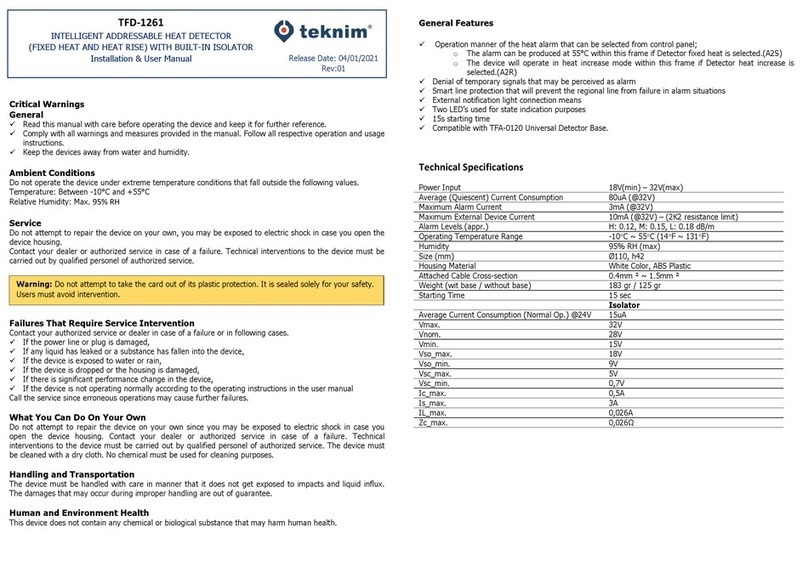
Teknim
Teknim TFD-1261 Instruction Manual
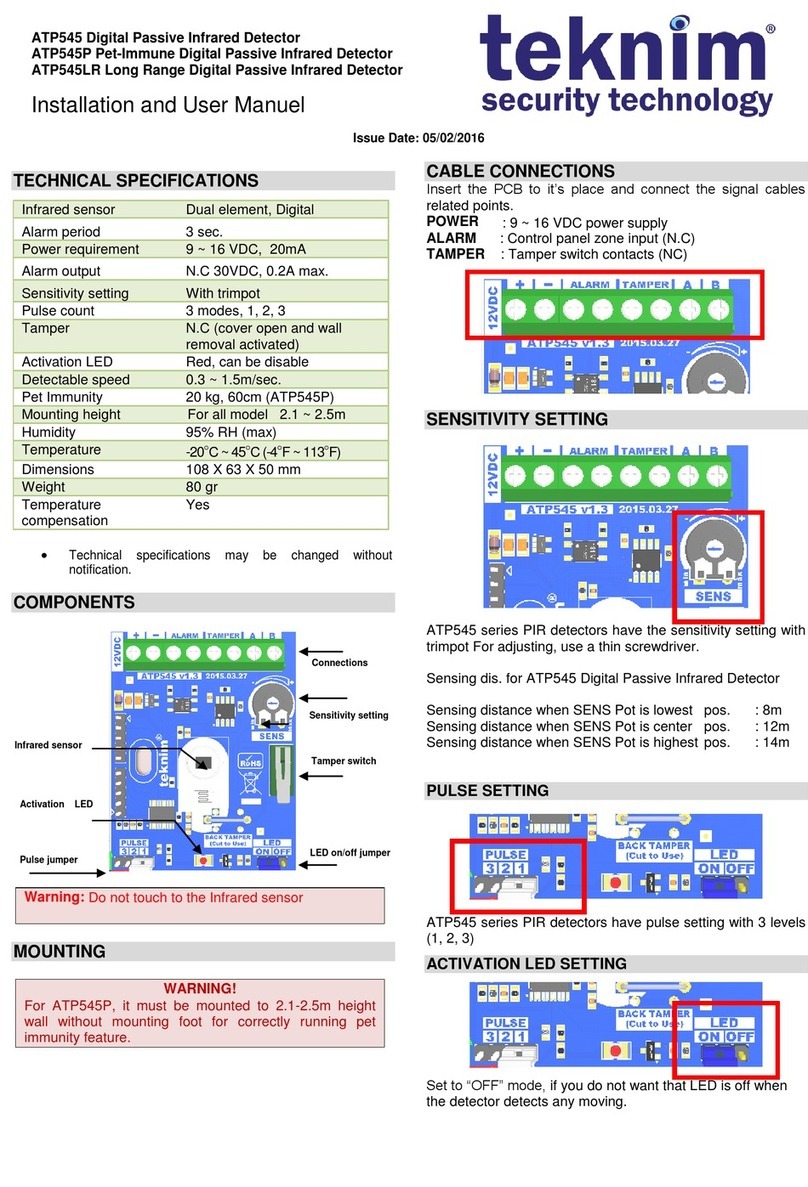
Teknim
Teknim ATP545 User manual
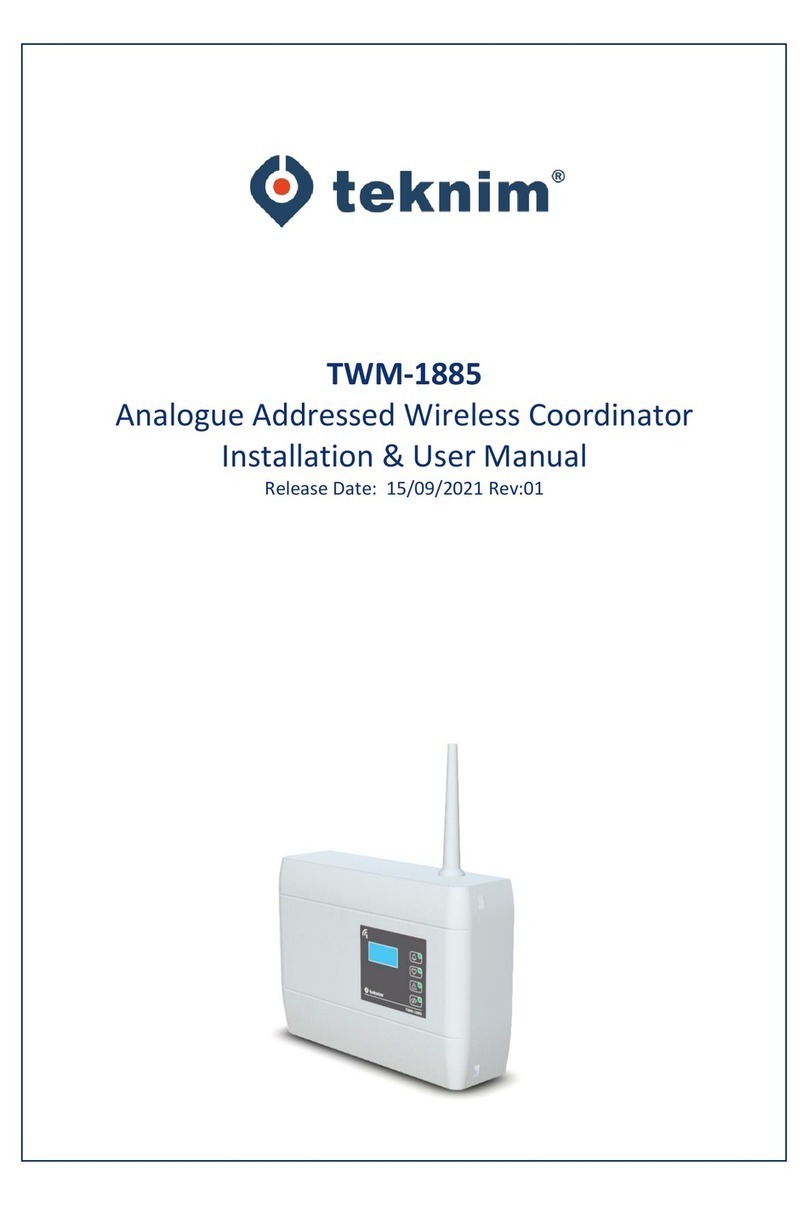
Teknim
Teknim TWM-1885 Instruction Manual

Teknim
Teknim TSD-5150 User manual

Teknim
Teknim TFD-3250 Troubleshooting guide

Teknim
Teknim TVSD143 User manual
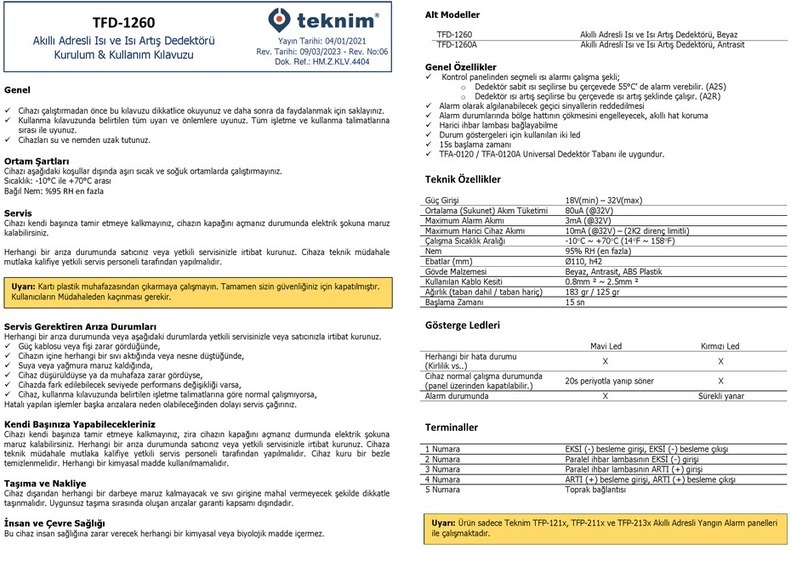
Teknim
Teknim TFD-1260 Instruction Manual
